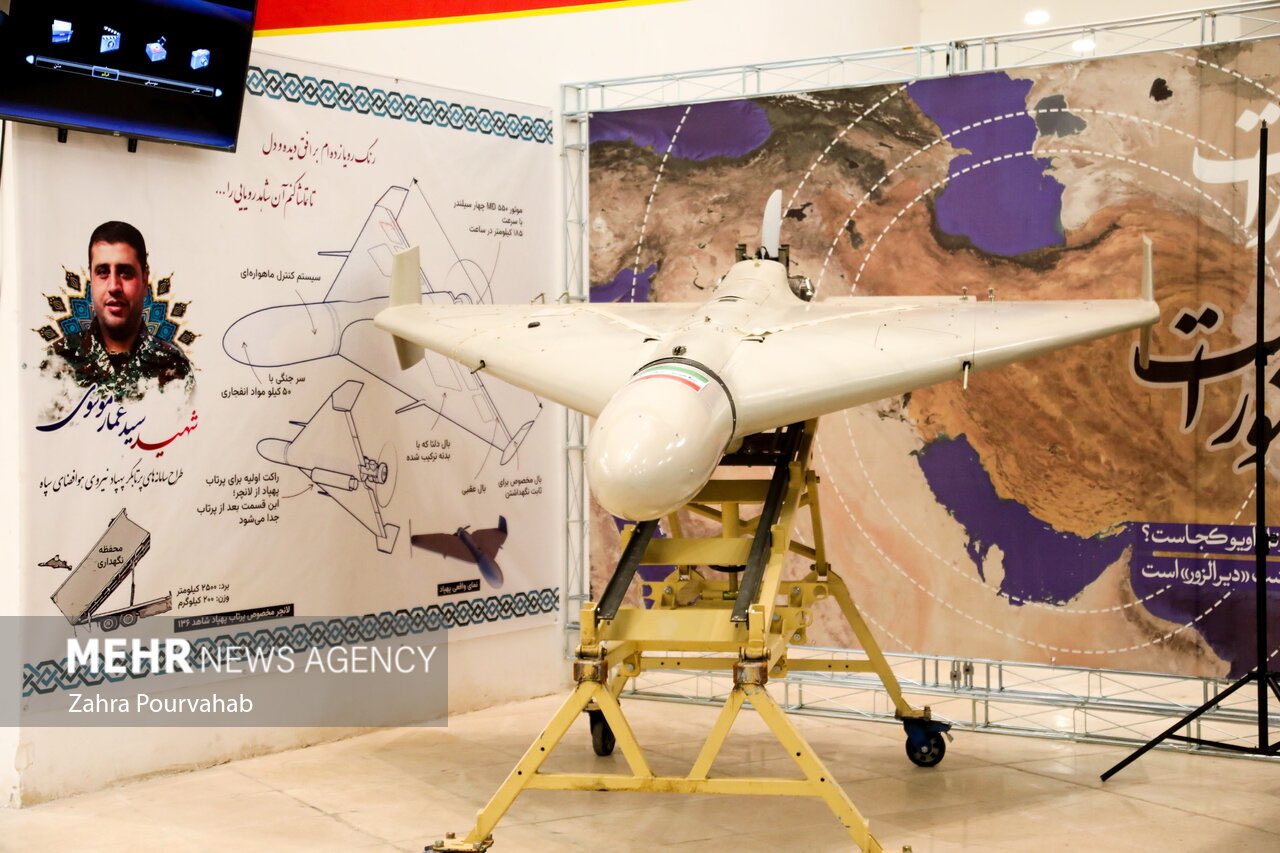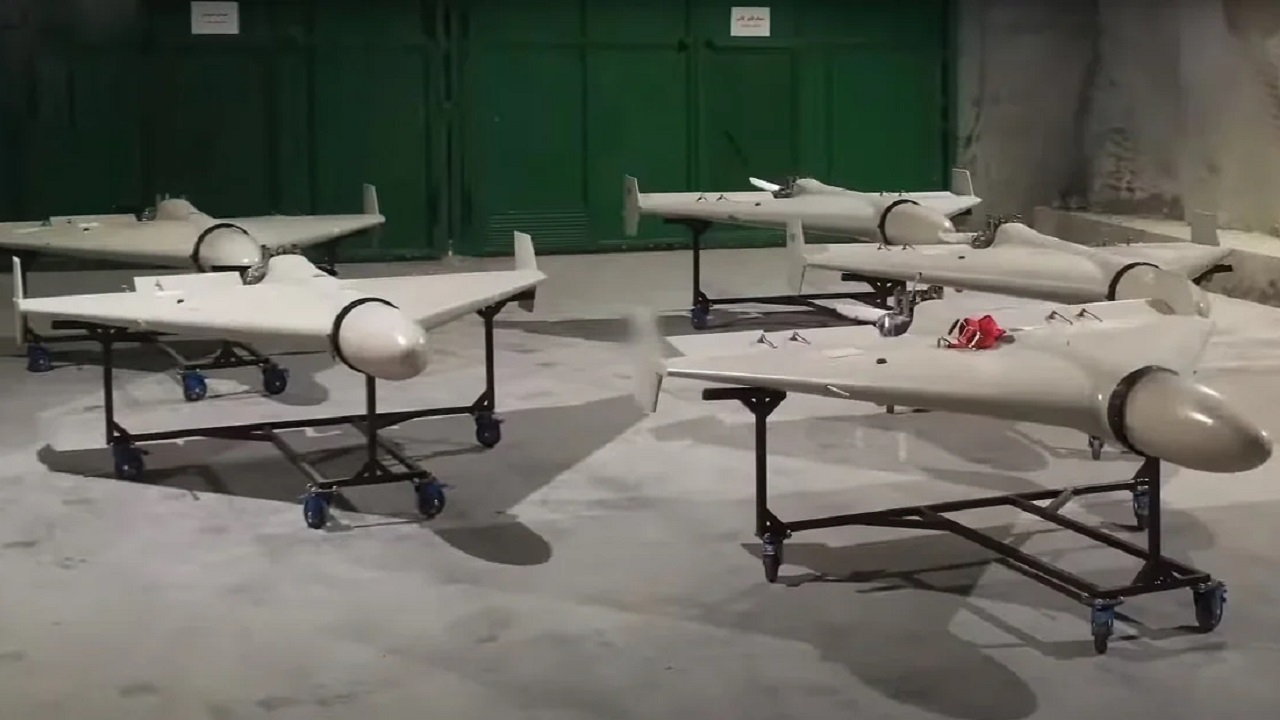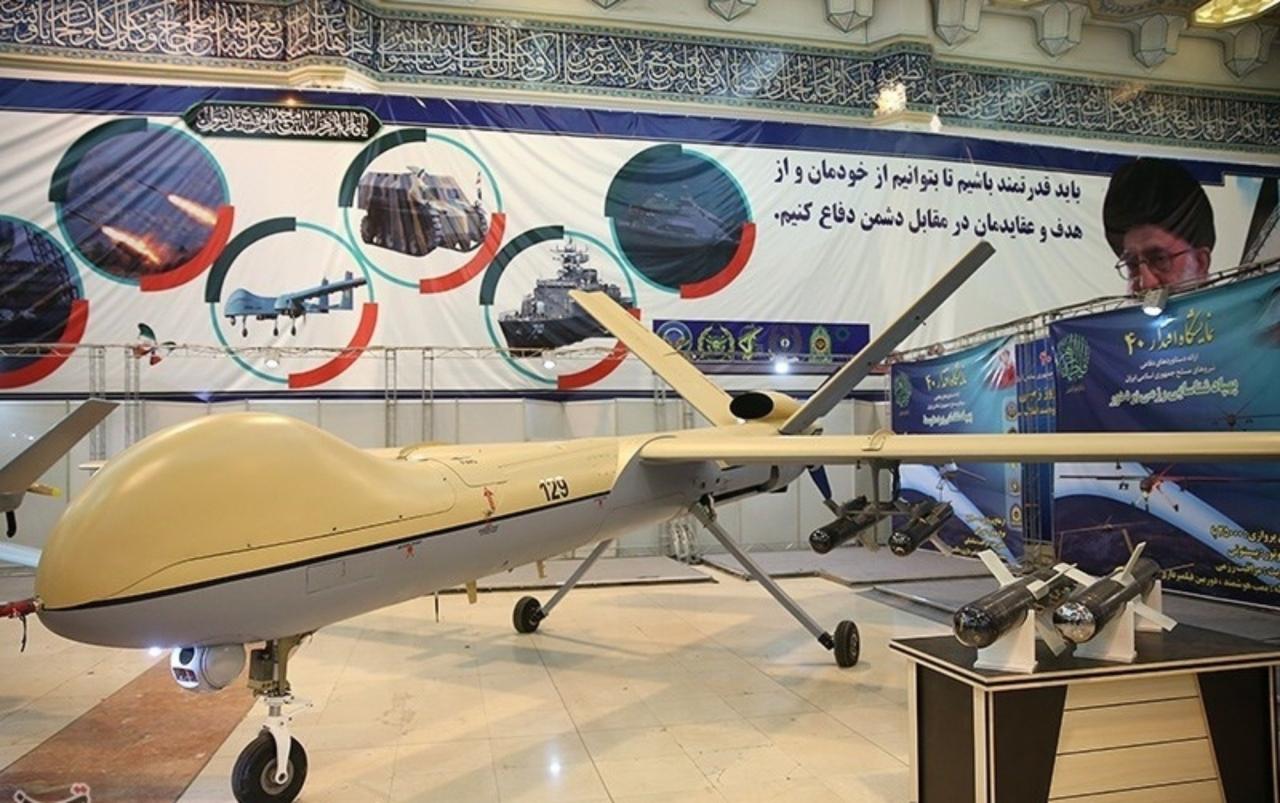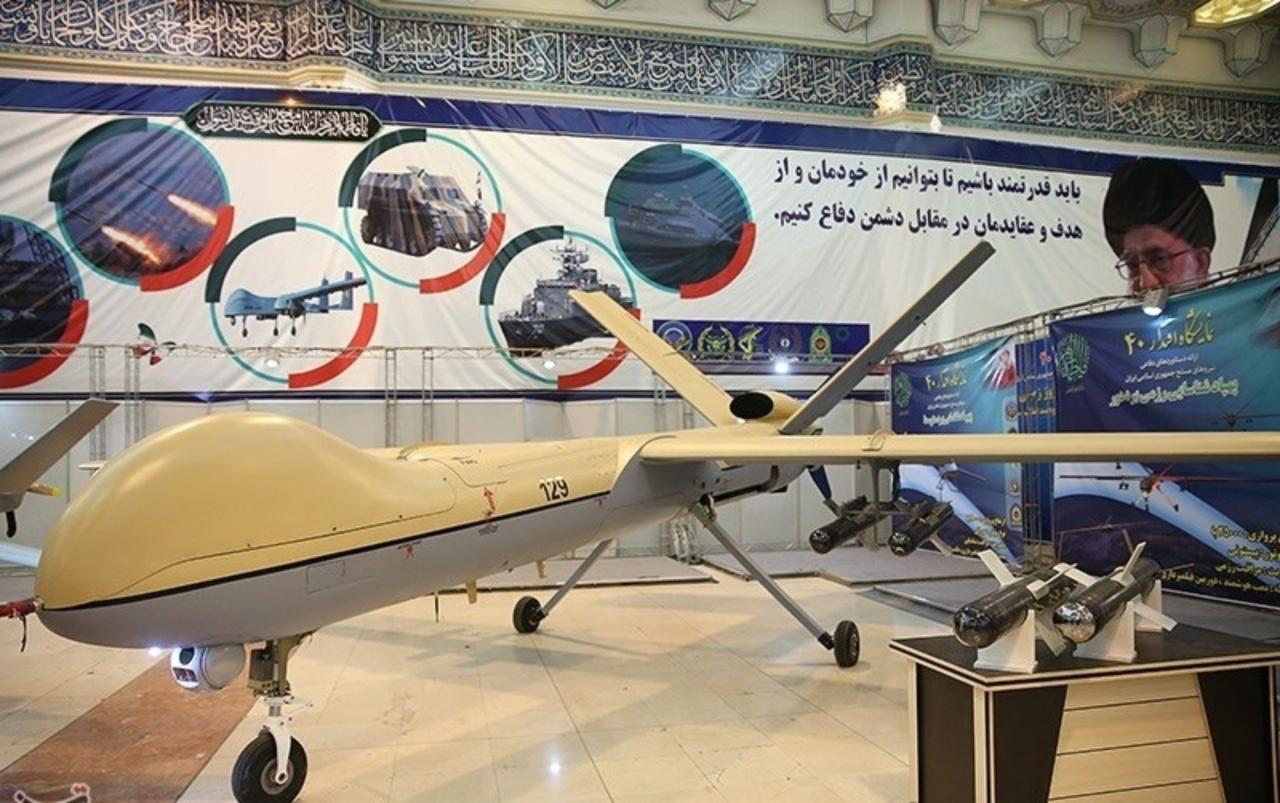Shahed drones, inexpensive and readily available, have significantly altered the landscape of modern warfare. Their proliferation across conflict zones globally has sparked intense debate regarding their effectiveness, ethical implications, and the challenges they pose to conventional defense systems. This analysis delves into the technical specifications, operational capabilities, manufacturing processes, deployment strategies, countermeasures, and geopolitical ramifications of this increasingly prevalent weapon system.
From their relatively simple design to their devastating impact on civilian infrastructure and military targets, the Shahed drone represents a significant shift in asymmetric warfare capabilities. Understanding its strengths and weaknesses is crucial for developing effective countermeasures and mitigating its potential for future conflict escalation.
Shahed Drone Technical Specifications
The Shahed drone, also known by various designations depending on its specific variant, represents a class of low-cost, loitering munitions. Understanding its technical specifications is crucial for assessing its capabilities and potential threats.
Physical Characteristics and Payload
The Shahed drone’s physical dimensions vary slightly depending on the specific model. Generally, it’s characterized by a relatively small size and lightweight construction, contributing to its ease of transport and deployment. Its payload capacity is limited, primarily designed for carrying a warhead. Precise dimensions and weights are often not publicly released due to security concerns.
| Model | Specification | Value | Unit |
|---|---|---|---|
| Shahed-136 (Example) | Length | 3.5 | meters |
| Shahed-136 (Example) | Wingspan | 2.5 | meters |
| Shahed-136 (Example) | Weight | 200 | kilograms |
| Shahed-136 (Example) | Payload | 40 | kilograms |
| Shahed-136 (Example) | Fuel Capacity | 50 | liters (approximate) |
Propulsion and Flight Duration
The Shahed drone utilizes a relatively simple propulsion system, typically a small internal combustion engine. This engine type contributes to the drone’s affordability but also limits its flight duration and range compared to more advanced UAVs using electric propulsion or turbofan engines. The fuel type is generally gasoline, which affects the operational range and flight time.
Communication and Range
The communication systems employed by the Shahed drone are designed for one-way data transmission, primarily for navigation and targeting. The range is limited by the drone’s communication system and the available satellite or ground-based infrastructure. The precise range is classified information.
| Model | Specification | Value | Unit |
|---|---|---|---|
| Shahed-136 (Example) | Communication System | Satellite/Ground Based (likely) | N/A |
| Shahed-136 (Example) | Range | 1000-2500 | kilometers (estimated) |
Shahed Drone Operational Capabilities
The Shahed drone’s operational capabilities are defined by its flight control system, modes of operation, and targeting mechanisms. Its simplicity is a key factor in its effectiveness, although this also limits its precision and adaptability compared to more sophisticated UAVs.
Flight Control and Navigation
The Shahed drone utilizes a combination of pre-programmed flight paths and inertial navigation systems for autonomous flight. Manual control is likely limited, primarily for launch and initial trajectory setting. GPS and other navigation aids play a significant role in its ability to reach designated targets. The system’s susceptibility to GPS jamming is a known vulnerability.
The Shahed drone, a relatively inexpensive yet effective weapon, has garnered significant attention for its role in recent conflicts. Understanding its capabilities often involves analyzing surveillance footage, and high-quality imagery is crucial. For instance, advanced camera systems like those featured on the port dover camera could potentially provide valuable insights into the drone’s operational parameters and tactics, furthering our understanding of this concerning technology.
Ultimately, detailed analysis of Shahed drone activity is key to effective countermeasures.
Modes of Operation and Targeting
The drone operates in both manual and autonomous modes. Manual operation is typically limited to the initial launch phase, while autonomous operation guides the drone to its target using pre-programmed coordinates. The targeting system relies on pre-programmed waypoints and potentially some level of real-time data transmission for adjustments, though the extent of this capability is uncertain.
- Autonomous flight to pre-programmed coordinates
- Limited manual control during launch
- Self-destruct mechanism (likely)
- Impact detonation of warhead
Payload Options
The Shahed drone’s payload is primarily limited to a high-explosive warhead. The exact weight and type of warhead vary depending on the specific variant.
- High-explosive warhead (primary)
- Potentially other payloads (unconfirmed)
Shahed Drone Manufacturing and Production
The manufacturing and supply chain of the Shahed drone involve various entities, highlighting the complexity of attributing responsibility and implementing effective countermeasures.
Manufacturing Processes and Technology
The Shahed drone’s manufacturing process relies on relatively straightforward techniques and readily available components. This contributes to its low production cost and ease of mass production. The production process is likely decentralized to mitigate supply chain disruptions.
Key Components and Sources
Pinpointing the exact sources for all components is challenging due to the opaque nature of the supply chain. However, it is widely believed that several countries contribute components, possibly indirectly, to the manufacturing process.
- Engine components (various sources)
- Electronics (various sources)
- Warhead components (various sources)
- Airframe materials (various sources)
Shahed Drone Deployment and Tactics
The Shahed drone’s deployment strategies are characterized by their simplicity and effectiveness in achieving asymmetric warfare objectives. Understanding these tactics is vital for developing effective countermeasures.
Deployment Scenarios and Tactics
Typical deployment scenarios involve launching the drones in large numbers from relatively unsecured locations, often exploiting cover of darkness. Swarming tactics are often employed to overwhelm defenses. The drones are expendable, making losses acceptable within the overall operational strategy.
Comparison with Other UAVs
Compared to more sophisticated UAVs, the Shahed drone sacrifices precision and advanced capabilities for affordability and ease of mass production. This trade-off allows for the deployment of large numbers, compensating for individual drone limitations.
Typical Shahed Drone Mission Flowchart
A simplified representation of a typical Shahed drone mission could be visualized as follows:
Launch -> Navigation to Target Area (using pre-programmed coordinates and inertial navigation) -> Target Acquisition (using onboard sensors or pre-programmed targeting data) -> Target Engagement (impact detonation of warhead) -> Mission Completion (self-destruct or impact).
Shahed Drone Countermeasures and Defenses
Effective countermeasures against Shahed drone attacks require a multi-layered approach, combining various technologies and strategies to maximize effectiveness. The relative effectiveness of each countermeasure depends on various factors, including the specific drone variant and the environment.
Effective Countermeasures, Shahed drone

Several countermeasures have shown varying degrees of effectiveness against Shahed drones. These include electronic warfare techniques, kinetic weapons, and other defensive technologies.
Comparison of Countermeasures
| Method | Effectiveness | Limitations | Cost |
|---|---|---|---|
| Electronic Warfare (Jamming) | Moderate to High (dependent on jamming effectiveness and drone resilience) | Limited range, potential for collateral effects | Moderate to High |
| Kinetic Weapons (e.g., Small Arms Fire) | Moderate (requires accurate targeting) | Requires precise targeting, potential for collateral damage | Low to Moderate |
| Air Defense Systems (e.g., CIWS) | High (if successful interception) | High cost, potential for collateral damage, limited effectiveness against swarms | Very High |
| Directed Energy Weapons (Lasers) | Potentially High | Technological maturity, high cost, limited range | Very High |
Shahed Drone Impact and Implications

The widespread use of Shahed drones has significant geopolitical implications, altering the dynamics of warfare and impacting civilian infrastructure.
Geopolitical Implications
The relatively low cost and ease of production of Shahed drones have lowered the barrier to entry for states and non-state actors to engage in armed conflict. This has destabilized regional security and increased the risk of escalation.
Impact on Military Operations and Civilian Infrastructure
Shahed drone attacks have demonstrated the vulnerability of military installations and civilian infrastructure to low-cost, relatively unsophisticated weapons systems. The psychological impact of repeated attacks is also significant.
Visual Impact of an Attack

The visual impact of a Shahed drone strike varies depending on the target and the size of the warhead. However, generally, it involves significant physical damage, fires, and destruction in the immediate vicinity of the impact. The resulting debris field can extend considerably depending on the target and explosion characteristics.
Shahed Drone Evolution and Future Developments
The Shahed drone’s design has undergone some evolution since its initial deployment. Future developments will likely focus on improving range, payload capacity, and survivability.
Evolution of Design and Capabilities
Initial variants were relatively basic, but newer iterations may incorporate improved navigation systems, more sophisticated warheads, and potentially enhanced countermeasure resistance. However, the fundamental design principles of simplicity and affordability are likely to remain core tenets.
Potential Future Developments
Future improvements could include increased range through more efficient engines and improved aerodynamics, larger payload capacity for carrying more destructive warheads or other payloads, and enhanced survivability through improved countermeasure resistance or decoy systems. Integration of more advanced targeting systems is also possible.
The Shahed drone, known for its inexpensive yet effective design, has garnered significant attention in recent conflicts. News reports of a similar incident, such as the drone shot down in NJ, detailed in this article drone shot down in nj , highlight the increasing concerns surrounding civilian airspace security. The incident raises questions about the proliferation of such drones and the potential for future similar events involving Shahed-type technology.
Design Improvements
Increasing range could be achieved through lighter materials, more fuel-efficient engines, and improved aerodynamic design. Larger payload capacity requires a larger airframe and potentially a more powerful engine. Improved survivability might involve incorporating electronic countermeasures, decoy systems, or more robust airframe construction.
The Shahed drone’s impact extends far beyond the battlefield. Its affordability and ease of use have democratized access to lethal aerial capabilities, raising serious concerns about the future of warfare and the potential for widespread instability. Further research into effective countermeasures, international cooperation to restrict their proliferation, and a thorough understanding of their operational capabilities are crucial steps in mitigating the risks associated with this technology.
Clarifying Questions
What is the typical lifespan of a Shahed drone?
The operational lifespan varies depending on usage and maintenance, but is generally considered relatively short compared to more sophisticated drones.
How accurate are Shahed drones in hitting their targets?
Accuracy varies significantly depending on factors such as weather conditions, operator skill, and target type. Reports indicate a range of accuracy, with some strikes precise and others causing widespread damage in a larger area.
What are the primary components imported for Shahed drone production?
Precise details are difficult to obtain due to secrecy, but evidence suggests reliance on various commercially available components sourced from multiple countries.
Can Shahed drones be easily jammed or disabled?
While susceptible to electronic warfare measures, the effectiveness depends on the sophistication of the jamming equipment and the specific drone model. Kinetic countermeasures are often more effective.
